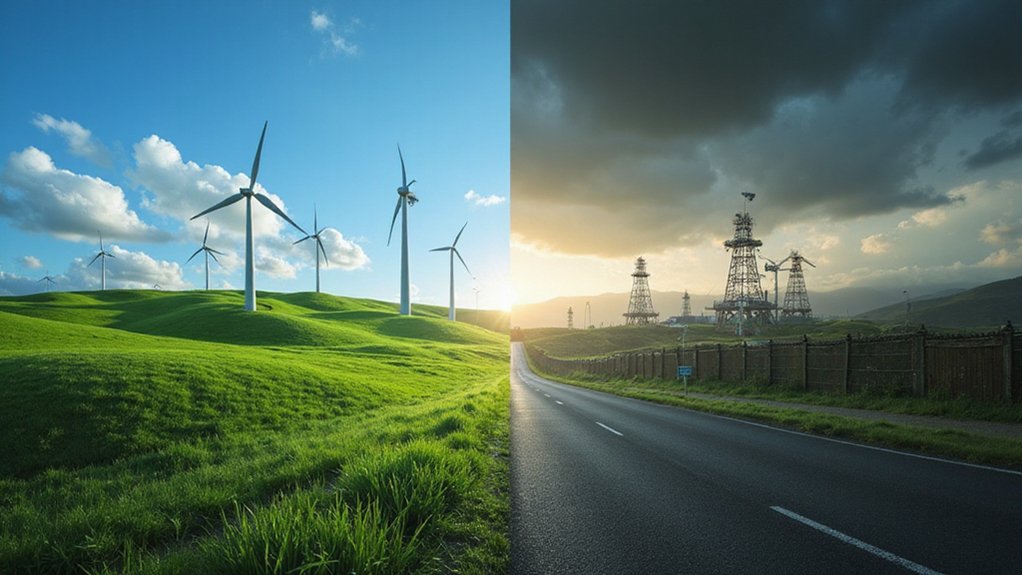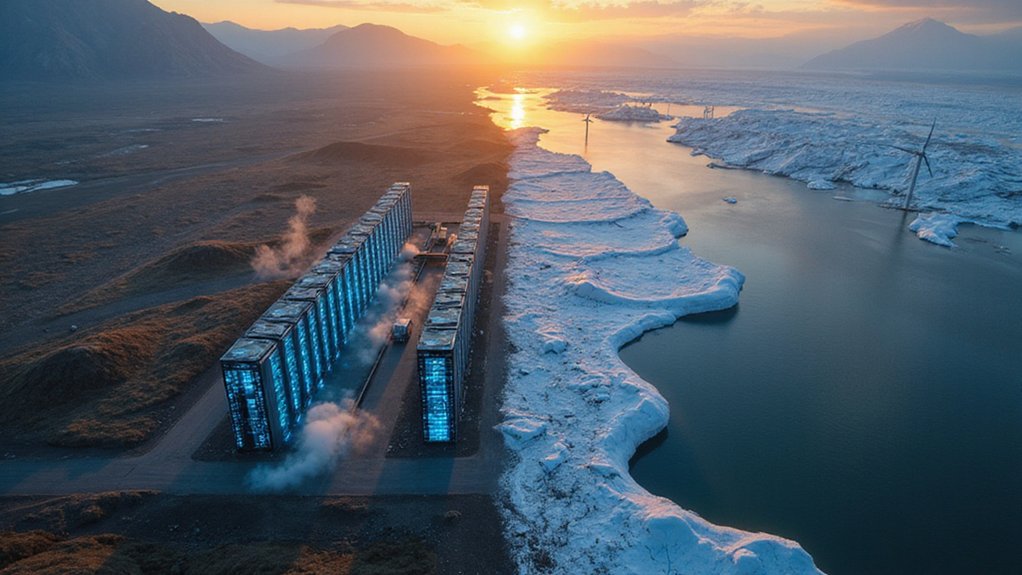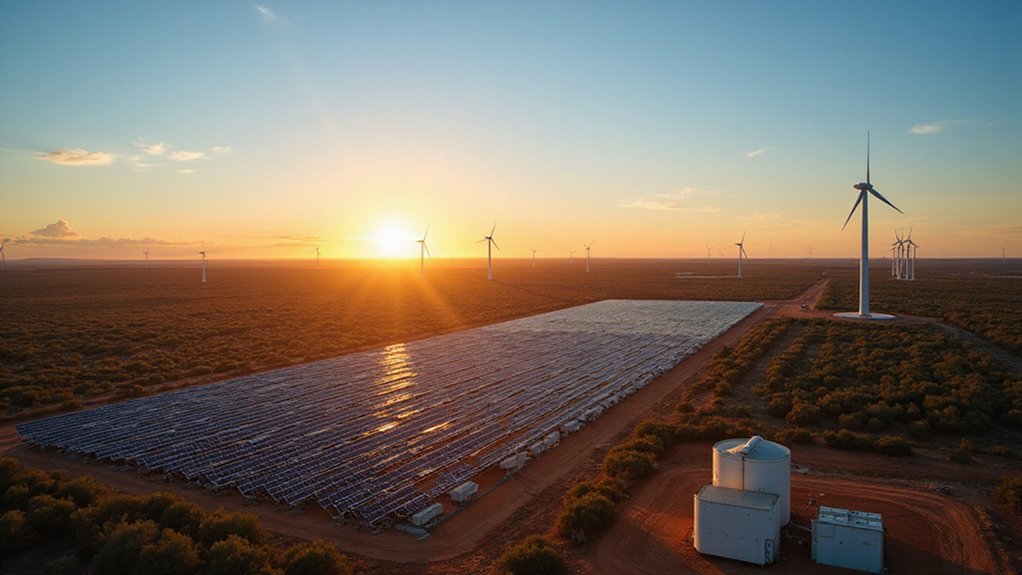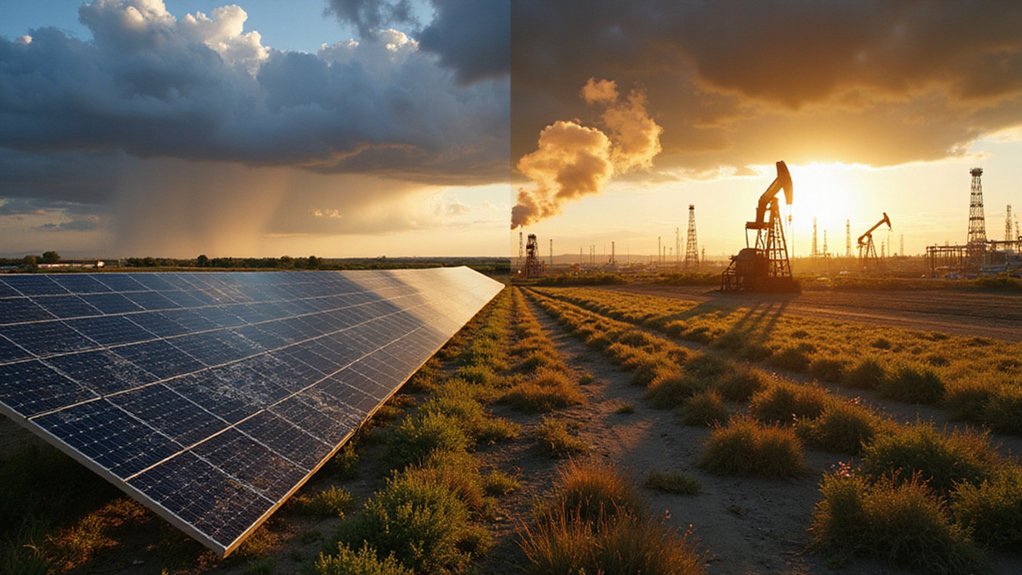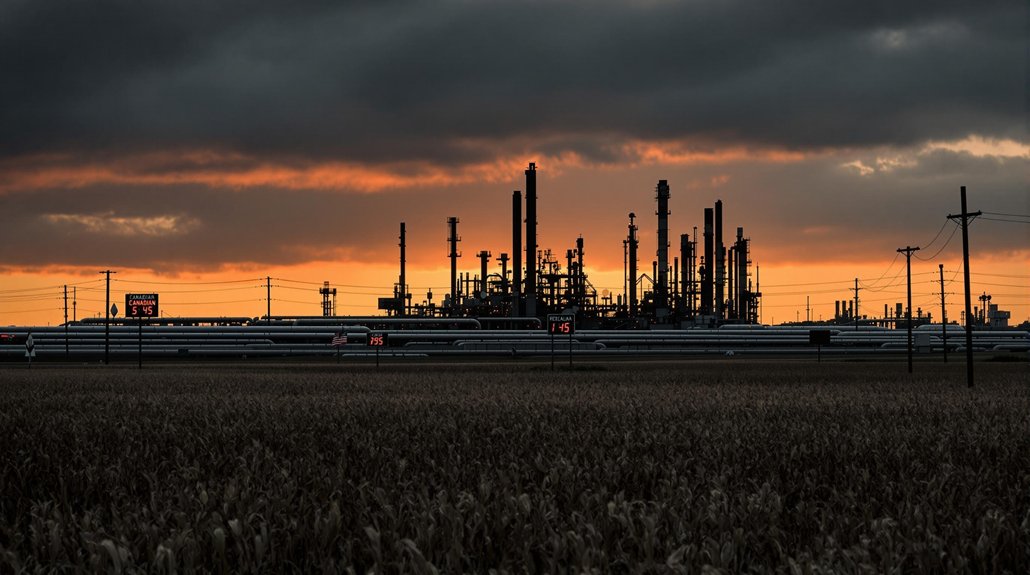The “impossible trinity” isn’t so impossible after all. Evidence shows well-designed climate policies can boost economic growth while enhancing security. Renewable energy creates triple the jobs of fossil fuels, and the net-zero sector grows faster than traditional industries. Climate action requires investment now but prevents far greater economic losses later. Countries reducing fossil fuel dependence gain economic stability and energy security. The data points to a promising path forward.
As the global economy faces slowing growth and rising uncertainty, the intertwined challenges of climate change and security have moved to center stage in international discussions. Experts warn that if global warming reaches 3°C, the world could lose between 15% and 34% of its economic output by 2100. This threat comes at a time when nations are already struggling with multiple economic pressures.
The good news is that climate action isn’t just about avoiding losses. The net-zero sector in the UK is growing three times faster than the overall economy. Well-designed climate policies can boost economic growth while creating high-wage jobs and driving innovation. Ending reliance on fossil fuels can provide greater energy security and economic stability. Economists suggest that investing just 1% to 2% of global output in climate action by 2100 could prevent much larger economic damage. Renewable energy creates three times more jobs than fossil fuels, offering a powerful economic incentive for the transition.
Security concerns are also deeply connected to climate challenges. Countries like India, Chile, and Mexico now recognize climate change as a security issue. Dependency on fossil fuels makes nations vulnerable during global instability. Climate impacts can weaken national security and make international cooperation harder.
The world is currently on track for 3°C warming by 2100, far above the Paris Agreement targets. The International Energy Agency states that no new oil and gas projects should be approved if we’re to meet climate goals. Yet fossil fuel subsidies remain at about $6 trillion annually – money that could fund climate initiatives.
To address these interconnected issues, climate finance must increase dramatically. Developing countries need $1.3 trillion annually for climate resilience and low-carbon growth. Investment in climate mitigation needs to grow nine-fold and adaptation funding thirteen-fold by 2050. Vulnerable nations are projected to suffer over $500 billion in climate-related damages annually by 2030 without adequate support.
Technology offers some hope. Advances in AI, robotics, and synthetic biology could help build resilience and reduce climate impacts. But policy frameworks must better integrate economic, security, and climate objectives.
With the next round of national climate commitments due by September, countries have an opportunity to align these three seemingly competing priorities into more coherent strategies.
References
- https://www.wri.org/insights/climate-finance-progress-2025
- https://wwf.panda.org/discover/our_focus/climate_and_energy_practice/?13965466/include-fossil-fuel-phase-out-in-NDCs
- https://www.weforum.org/stories/2025/01/climate-change-security-relationship/
- https://www.imf.org/en/Publications/WEO/Issues/2025/04/22/world-economic-outlook-april-2025
- https://www.bcg.com/publications/2025/investing-in-climate-action
